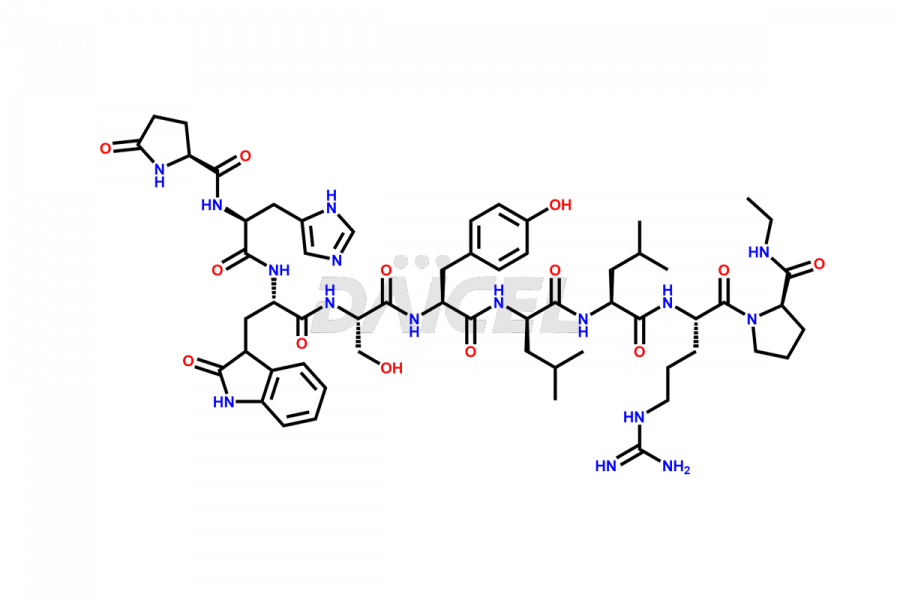Leuprolide
References
- USP-NF on Leuprolide
- Alexander IvchenkoHagi AlonShai ElsterShimon ShushanChaim EidelmanAvi ToviTehila GadiLeah Bar-OzEleonora AltermanGil ZaoviGabriel-Marcus Butilca, Novetide Ltd, “Methods for the production of leuprolide”, EP2119725A1, November 18, 2009
- Sutherland, J. W.; Menon, G. N., , “HPLC of leuprolide acetate in injectable solutions”, Journal of Liquid Chromatography Volume: 10, Issue: 10, Pages: 2281-9,1987
Frequently Asked Questions
How are Leuprolide impurities detected and characterized during the synthesis process?
Leuprolide impurities are detected and characterized using various analytical techniques such as high-performance liquid chromatography (HPLC), liquid chromatography mass spectrometry (LC-MS), and infrared (IR) spectroscopy.
What are the factors influencing the formation of Leuprolide impurities in its synthesis?
The factors that can influence the formation of Leuprolide impurities during its synthesis include the quality and purity of starting materials, reaction conditions, catalysts and reagents used, purification methods, and storage conditions.
How are Leuprolide impurities synthesized?
The synthesis of Leuprolide impurities typically involves solid-phase peptide synthesis techniques, which include protecting and activating amino acid building blocks, assembly of the peptide chain, deprotection and purification of the peptide, and characterization and analysis of the final product
What are the storage conditions required for Leuprolide impurities?
The storage conditions for Leuprolide impurities may vary depending on the specific impurity and its stability. In general, it is recommended to store Leuprolide impurities at temperatures between 2-8°C in a dry and well-ventilated area to prevent degradation and maintain their stability. However, some impurities may require specific storage conditions such as refrigeration or freezing, to ensure their stability over an extended period.
Note: Products protected by valid patents by a manufacturer are not offered for sale in countries having patent protection. The sale of such products constitutes a patent infringement, and its liability is at the buyer's risk.

